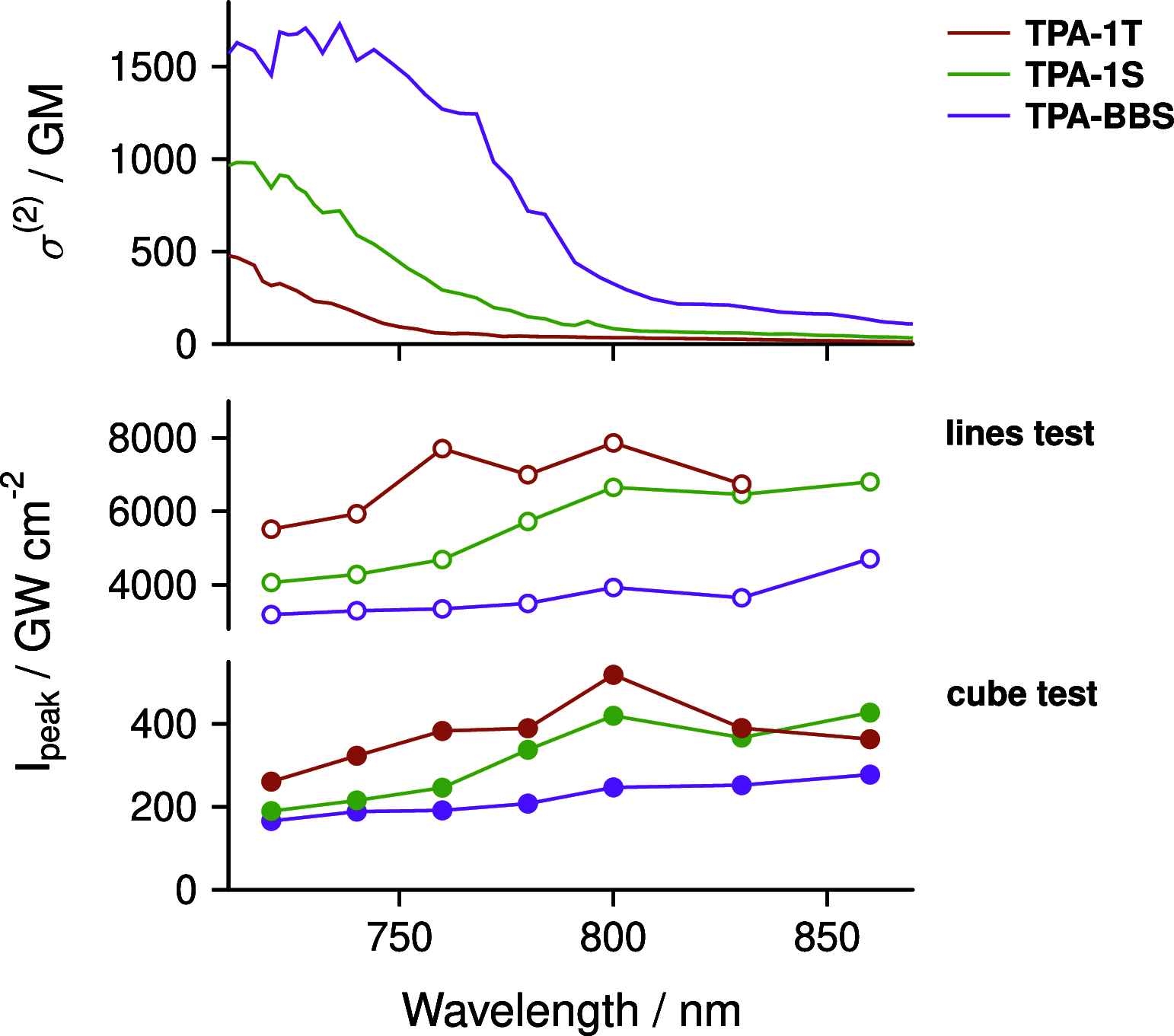Beyond the Threshold: A Study of Chalcogenophene-Based Two-Photon Initiators
- PMID: 35431440
- PMCID: PMC9009090
- DOI: 10.1021/acs.chemmater.1c04002
Beyond the Threshold: A Study of Chalcogenophene-Based Two-Photon Initiators
Abstract
A series of nine soluble, symmetric chalcogenophenes bearing hexyl-substituted triphenylamines, indolocarbazoles, or phenylcarbazoles was designed and synthesized as potential two-photon absorption (2PA) initiators. A detailed photophysical analysis of these molecules revealed good 2PA properties of the series and, in particular, a strong influence of selenium on the 2PA cross sections, rendering these materials especially promising new 2PA photoinitiators. Structuring and threshold tests proved the efficiency and broad spectral versatility of two selenium-containing lead compounds as well as their applicability in an acrylate resin formulation. A comparison with commercial photoinitiators Irg369 and BAPO as well as sensitizer ITX showed that the newly designed selenium-based materials TPA-S and TPA-BBS outperform these traditional initiators by far both in terms of reactivity and dose. Moreover, by increasing the ultralow concentration of TPA-BBS, a further reduction of the polymerization threshold can be achieved, revealing the great potential of this series for application in two-photon polymerization (2PP) systems where only low laser power is available.
© 2022 The Authors. Published by American Chemical Society.
Conflict of interest statement
The authors declare no competing financial interest.
Figures







References
-
- Tofail S. A. M.; Koumoulos E. P.; Bandyopadhyay A.; Bose S.; O’Donoghue L.; Charitidis C. Additive Manufacturing: Scientific and Technological Challenges, Market Uptake and Opportunities. Mater. Today 2018, 21, 22–37. 10.1016/j.mattod.2017.07.001. - DOI
-
- Farsari M.; Chichkov B. N. Two-Photon Fabrication. Nat. Photonics 2009, 3, 450–452. 10.1038/nphoton.2009.131. - DOI
LinkOut - more resources
Full Text Sources
